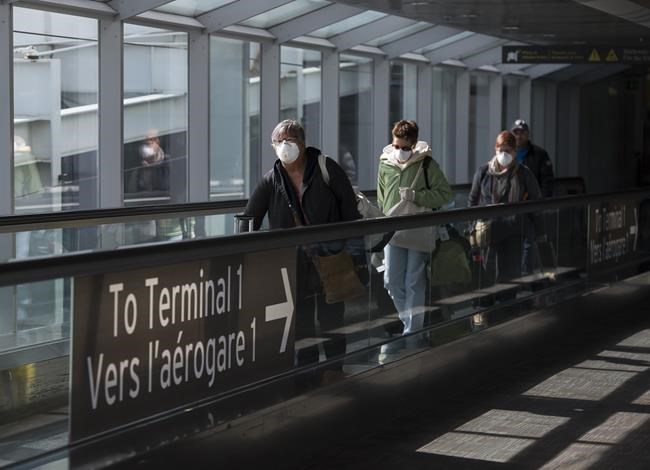OTTAWA — For one traveller returning to Toronto from Vietnam, the way officials handled arrivals to Canada was startling when compared to strict COVID-19 guidelines in the southeast Asian country.
Cameron Topp, who was in Vietnam to visit his wife's family, said officials at a mid-sized city airport there were checking the temperature of each traveller and handing out free face masks.
The Hamilton resident said most staff and travellers wore masks and were using hand sanitizer regularly throughout their flight.
But he described a stark difference in attitude as soon as he arrived at Pearson International Airport in Toronto on the weekend.
"When we got off the plane in Toronto it was shocking — it was like a whole different world, nobody seemed to care," said Topp.
"The staff that were there helping the elderly into wheelchairs, none of them had face masks on at all, it just looked like any other day."
He expressed concern about large crowds from various destinations mixing in customs areas, even after reports that people without symptoms may carry COVID-19.
Topp said he was also put off by the lack of direct explanation about how people should go about self-isolating for 14 days.
John Gradek, a lecturer at McGill University's School of Continuing Studies specializing in aviation management, was not surprised by Topp's account.
The federal government is funnelling most international air arrivals into four hubs: Toronto, Montreal, Calgary and Vancouver.
"It's a very, very difficult situation to manage. People are anxious to get home. So they want to get off the airplane and get out of the airport as quickly as they possibly can," said Gradek, who has held senior roles at Air Canada in operations, marketing and planning.
Officials have to manage that stress, sometimes bordering on panic, in an arrivals hall that is effectively now a Petri dish, he said.
"Are they doing what they should be doing? The answer is probably no."
The Greater Toronto Airports Authority says it is working closely with the Public Health Agency of Canada and Canada Border Services Agency to ensure that all proper measures are taken with international arrivals.
Officials said last week that anybody with symptoms of COVID-19 would not be allowed to board flights to Canada.
Any passenger who arrives at Toronto's main airport with symptoms is assessed by the public health agency, said Robin Smith, a spokeswoman for the airports authority. Based on the agency's recommendation, that passenger can be transported directly to hospital by paramedics.
To help manage the flow of arriving passengers, maintain physical-distancing requirements and reduce crowding, airport staff will sometimes hold an arriving flight on the tarmac or at the gate for a short period, Smith said.
The airport is also taking steps to stage passengers in queues to provide more space, she said.
"Signage has been installed throughout the airport and public announcements are made regularly to remind passengers to observe social-distancing standards," Smith said. "We put these measures in place to encourage and remind passengers to exercise their own ability to socially distance."
The border agency said additional teams of roving officers are now working throughout the arrivals and baggage areas at airports to engage with travellers.
These additional officers are visually observing arriving passengers and asking them how they are feeling to ensure they are aware of the guidance provided by the public health agency.
"CBSA officers will use their training to approach any traveller displaying signs of illness for further questioning," the border agency said.
Gradek emphasized the need to manage the flow of arriving passengers into airports, even if it means lengthy waits.
He said officials should hand out masks to all passengers arriving from abroad since people infected with COVID-19 might not display obvious symptoms. "They could be walking through the airport and communicating that virus to others."
This report by The Canadian Press was first published March 24, 2020.
Salmaan Farooqui and Jim Bronskill , The Canadian Press



